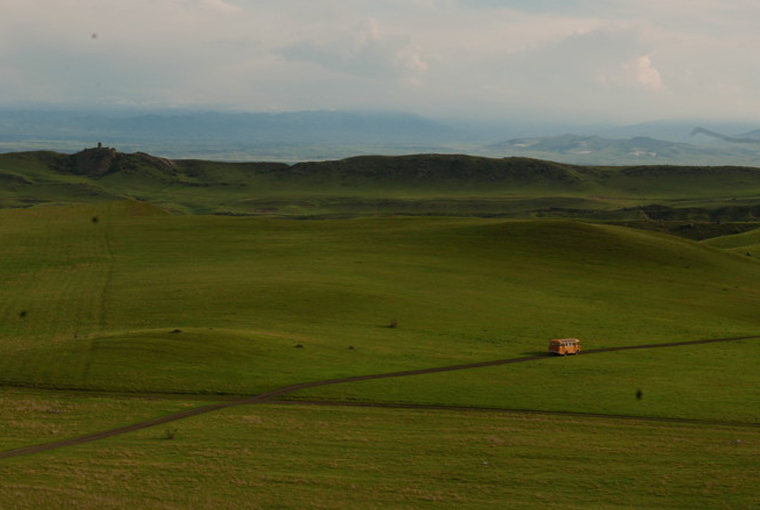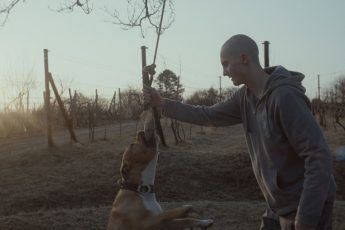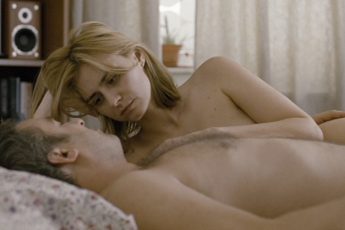Tedious, Intriguing and Poignant
Tetiana Khodakivska and Oleksandr Stekolenko’s Enticing, Sugary, Boundless or Songs and Dances about Death (Manliviy, solodkiy, bez mezh ili písní í tantsí pro smert, 2017)
Vol. 79 (November 2017) by Zoe Aiano
From the offset, this documentary has a lot working against it. Even in a year marked by terrible titles, “Enticing, Sugary, Boundless or Songs and Dances about Death” still wins the prize for most off-putting. As a film that sets itself the talk of addressing the taboo of death by celebrating the beauty of life, a task that requires no little mastery and a suitably deft and poetic touch, it also seems to be setting itself up for failure.
Indeed, the initial opening gives a mixed message of what is to come. The film is launched with no less than two separate introductions, both appealing and intriguing but basically unrelated. Specifically, a song of mourning in an obscure language (in fact, director Tetiana Khodakivska more or less invented it as a composite of several Scandinavian versions) is sung on the streets of New York, followed by an interview with a man who has been told that he is dying but doesn’t have any symptoms, in which he reflects on the onerousness of constantly having to live in the present. After this the film shifts to its main structure, in the form of a trilogy of portraits of places in some way connected to death.
The first of the three parts takes place in Italy and focusses on Eleonora Yablochkina, the Russian widow of author Tonio Guerra. Interweaving conversational interviews with what seems to be some sort of artists’ widows club, rainy landscape shots are followed by messy images of vaguely abstract scenes that don’t really justify their inclusion. The incessant namedropping of monumental figures such as Federico Fellini and Michelangelo Antonioni soon grows tiring, and the connection to the concept of death tenuous and superficial. In keeping with the rest of it, the bafflingly named “enticing” segment ends more or less in keeping with the film as presented thus far, without offering any insight or narrative drive.
However, as if by magic, as soon as the filmmakers leave Italy behind and turn to “sugary” Ukraine, the film suddenly starts to live up to its premise. Somewhere in the snowy rural countryside, a community faces extreme conditions on a daily basis and has learned to resign itself to the inevitability of death as an intrinsic element of life. An old lady refuses to make future plans on the grounds that she might not be around to see them through, and a mother watches her daughter walk to school through the forest each day, fully aware of the presence of wolves. For the first time, the protagonists actually have an interesting perspective told in an engaging way, which in turn confers previously non-existent meaning to the collage approach. While still verging on cliché, the images begin to feel much more coherent with the topic and less grating, even if the exaggerated analogue style is a bit tiring at points.
The third and final part is the strongest. For the “boundless” section, the action moves to Georgia, where a series of slice of life vignettes are intertwined with scenes concerning a recent death. We witness a commemorative dinner, in which the mourners reflect both on the tragedy and absurdity of death, making jokes and singing heart wrenching songs. An informal interview with the man’s widow, who happens to be a painter, is structured around a discussion of her art works, keeping the notion of death peripheral.
Indeed, the gradual emergence of the theme is most effective in this third. Eventually, it becomes apparent that the deceased person in question is none other than Giorgi Beridze, the cameraman on the first two sections of the film. This revelation is handled delicately, and accounts for the strong sense of intimacy. While this section would have still been effective had it been someone else (assuming the crew could have had the same access), the personal proximity between filmmakers and subject does seem to add a certain subjectivity that is perhaps necessary when addressing such a monumental taboo topic. In both the Ukrainian and the Georgian sections, the concept of death as an inevitable part of daily life is very clear and poignant, with a stoic attitude being adopted in the first case and a “life must go on” mentality in the latter. However, perhaps the effectiveness of the Georgian stories also lies in the fact that they are simply more relatable to the average viewer – everyone has to negotiate moving on after the loss of a loved one at some point, but most of us don’t have to worry about being mauled by ferocious beasts or trapped in avalanches. This may also account for the complete meaninglessness of the Italian section – even fewer of us have to deal with the trauma of being widowed by a great artist.
It is unfortunate that in order to get to the actually engaging two thirds of the film, viewers are required to sit through an unwatchable third, which feels endless rather than enticing. Perhaps Tetiana Khodakivska and Oleksandr Stekolenko needed some time to develop their approach, or perhaps they didn’t find what they were looking for in Italy but felt obliged to include the footage anyway after having spent so much time and money on it. Whatever the reason, there is such an imbalance in the quality of the film, it is worth persevering overall.




Leave a Comment